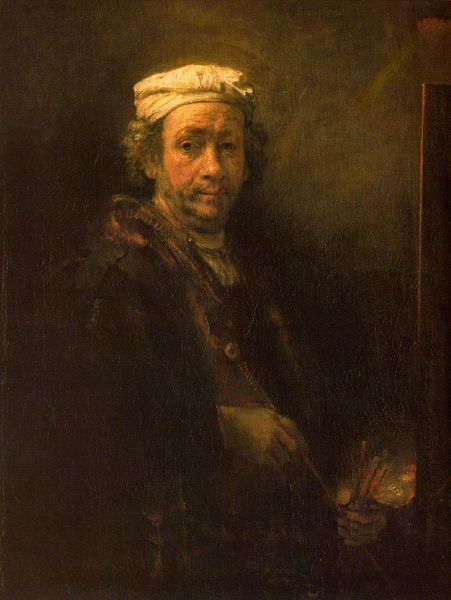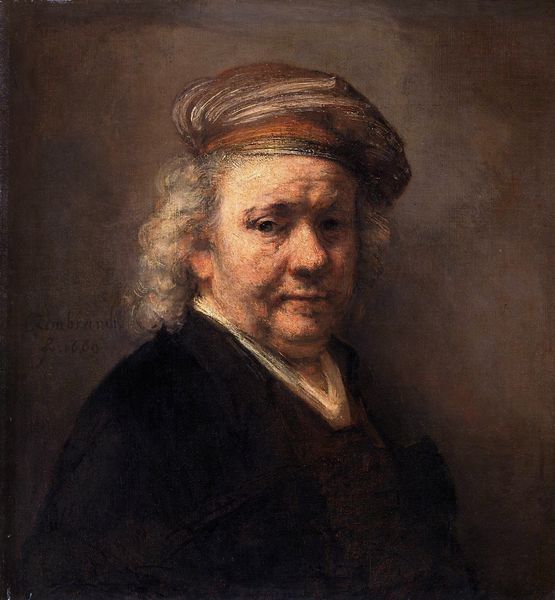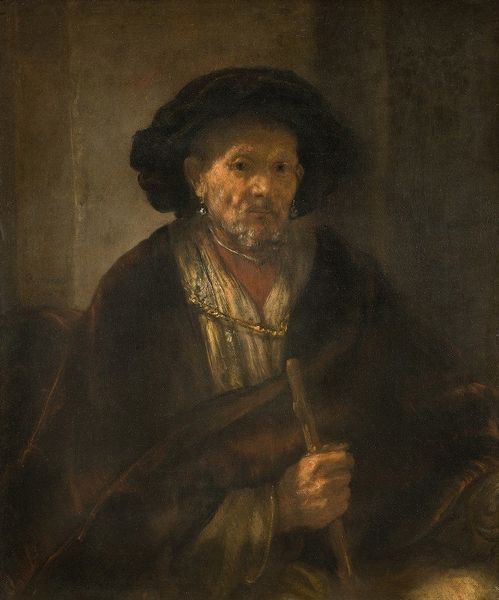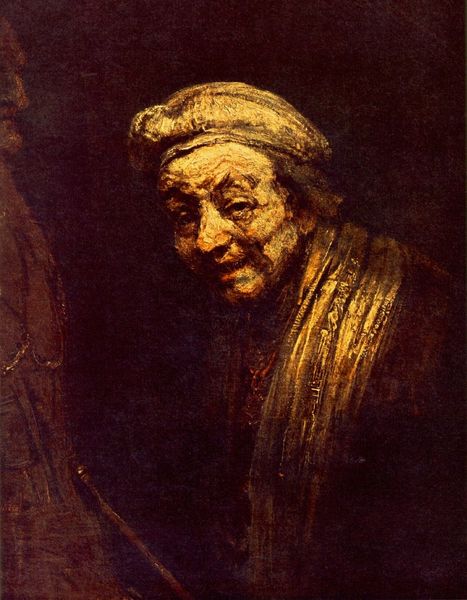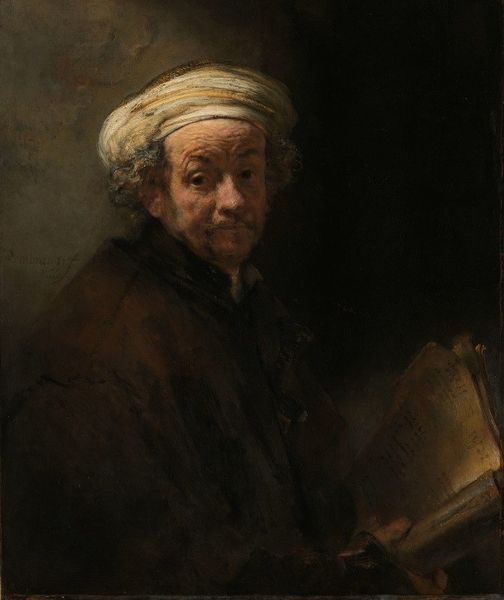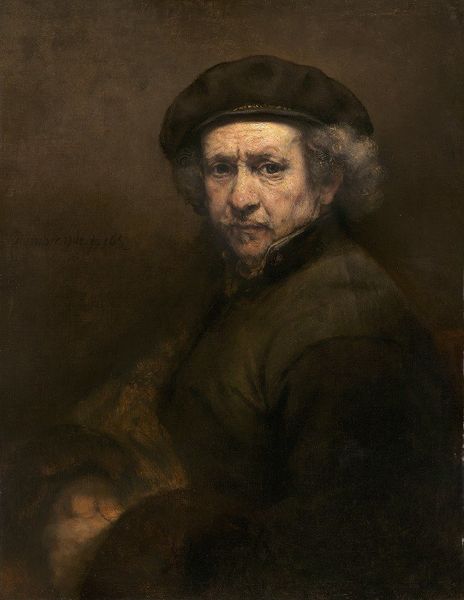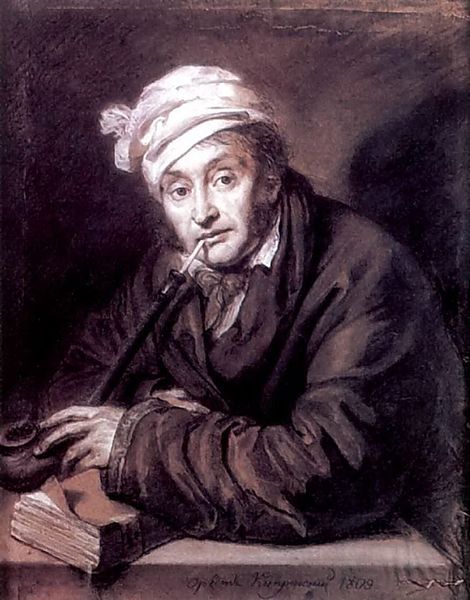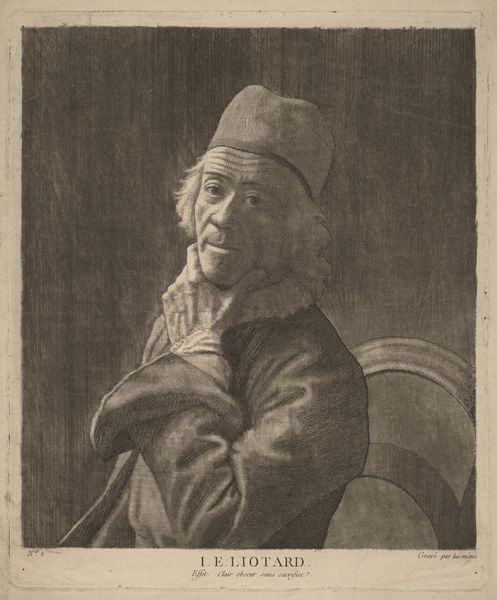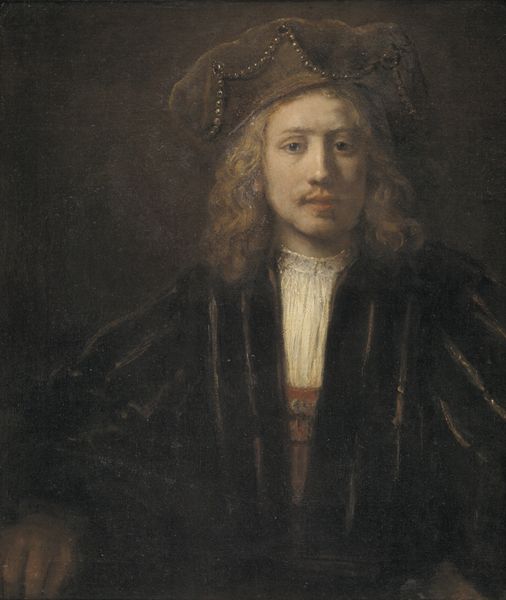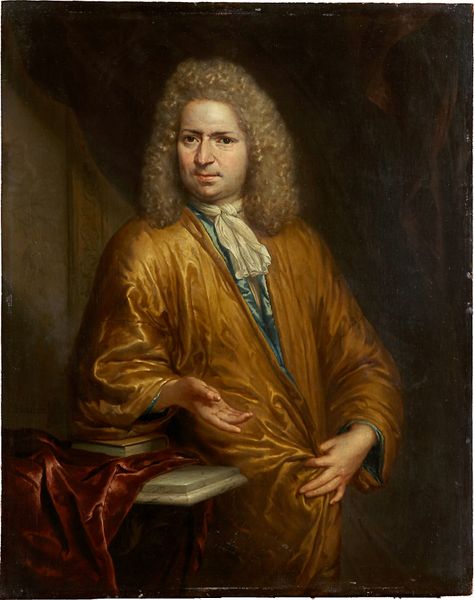
painting, oil-paint
#
portrait
#
self-portrait
#
baroque
#
dutch-golden-age
#
painting
#
oil-paint
#
oil painting
#
realism
Dimensions: 111 x 85 cm
Copyright: Public domain
Curator: Standing before us is Rembrandt van Rijn's "Self-Portrait" from 1665, currently residing at Kenwood House in London. It's rendered in oil paint. What springs to mind for you? Editor: Heavy. Visually heavy, emotionally heavy. It's that muted palette, all browns and burgundies. I’m immediately thinking about the cost of pigments at the time, especially anything not earth-toned. Curator: The subdued colours definitely lend a certain gravitas, don’t they? The portrait style here seems stripped down, honest, really diving into his ageing features. Those eyes...they’ve seen a lot. It is like peering directly into the soul of an artist reflecting on his life and work. Editor: Absolutely, and that’s down to material mastery. The rough canvas texture beneath the visible brushstrokes, the sheer volume of impasto built up around his face and hands, especially in the white turban... that stuff costs money, real material resources invested in the construction of the artist's persona. Curator: True! Consider the circles sketched in the background. Scholars still debate what they represent – some say they are maps symbolizing his artistic ambitions. Or maybe the cosmos. It reminds us art is more than just about the materials though. Rembrandt had a unique, palpable presence, a signature way of manipulating paint. Editor: Well, sure. The underpainting is doing a lot of work. And the varnish probably had an amber tint, layering depth and tone. You see art historians fussing about 'genius,' but the work and the expense is crucial to understanding his impact, and access! Curator: It's definitely interesting to view it from both ends of the telescope, thinking about Rembrandt, his life, his experiences—versus the realities of paint and what that represented. The portrait almost exists as an artifact— a thing to be mined and understood. Editor: Exactly. Art becomes like industrial heritage when you start accounting for materials. Thinking through labor, resources, global trade even… it all contributed to this remarkable painting. Curator: A meeting of the spiritual and the pragmatic then! What an insight. Editor: Thanks!
Comments
No comments
Be the first to comment and join the conversation on the ultimate creative platform.
